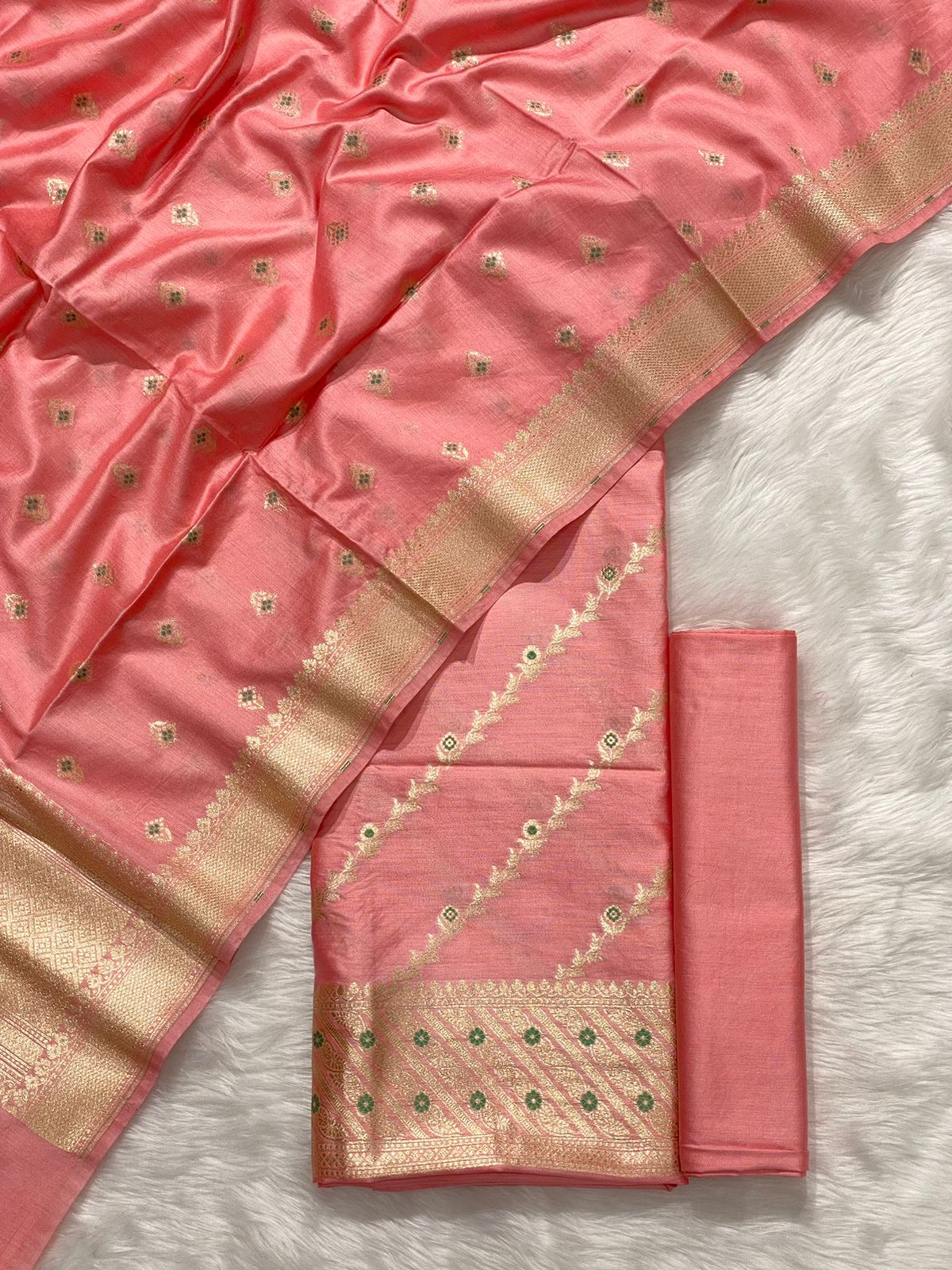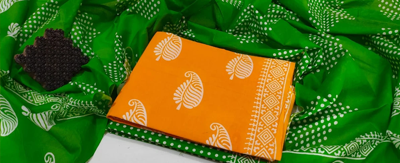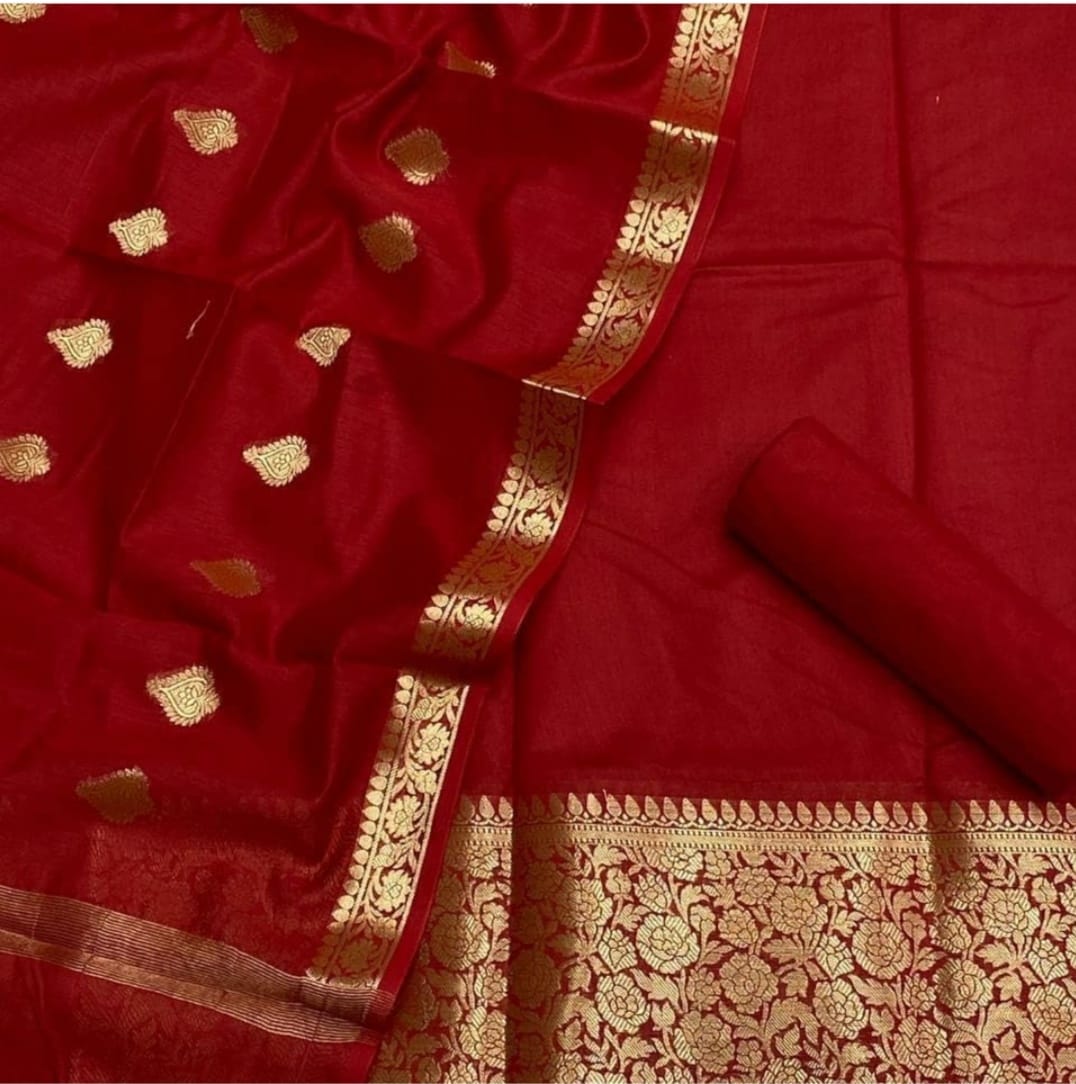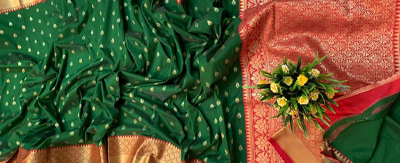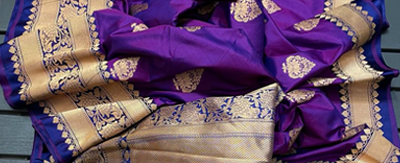Crafts

-

-
Chikankari
What is Chikankari?
Chikankari is a heritage art technique that is a blend of Indian and western patrons. It originated from Lucknow, India but has its roots in the Mughal era. It's not just a simple embroidery technique but an ancient art as it is Unique and Standalone among all traditional techniques.
How is it created?
This embroidery was initially done on a piece of muslin fabric with white thread for enhancing its beauty. It was adorned by imperial people. But nowadays this work has been done on various types of fabric like organza, chiffon, and many more. It gives a very subtle and classy feel due to its simple traditional handwork
What are the wash care instructions?
Chiaknkari requires Dry cleaning. To get a long life of your Chiaknkari outfit it is better to dry clean it.
If in case you are washing it with your hand then must use a mild detergent and rinse it in cold water.
Dry the fabric inside out. Avoid direct sunlight.
-

-
Gota Patti
What is Gota Patti?
The most sophisticated outfit a woman can wear is a saree. Gota Patti saree can be said as the forte of Rajasthan. Years ago Gota Patti was done only with pure gold, silver, and copper wires. But some famous designers transformed it by blending it with some contemporary fabrics. From zari ribbon, it has been stitched together into fascinating patterns with ornamental needlework. When it comes to special occasions, wearing a Gota Patti saree that is adorned with zari is always an honour.
How is it Created?
Lucknow is renowned for its gold and silver lace, known as Gota. In essence, it is a metallic lace with polyester and cotton ribbons. Small zari pieces are sewed onto fabric edges to create a pattern. The zari threads are generally made of gold plated or real silver or from a copper wire glided by gold or silver. In ancient times royal families were the only ones who wore the Gota work saree. Uppada handlooms are responsible for creating the Uppada sarees that are known for their distinctive designs. They originate in a beach town called Uppada in the state of Andhra Pradesh.
What are the wash care instructions?
Gota Patti requires Dry cleaning. To get a long life of your Gota Patti outfit it is better to dry clean it.
If in case you are washing it with your hand then must use a mild detergent and rinse it in cold water.
Dry the fabric inside out. Avoid direct sunlight.
-

-
Zari
What is Zari?
An intricate art of weaving threads that are created with fine gold or silver, an epitome of royal embellishments on a fabric. After the weaving process threads are woven into fabrics. These threads are primarily made up of silk which makes it easy to create some intricate patterns. It is mainly used for dress design, Saree design, making of royal dresses, etc, as it is more selective in embroidery.
Types of Zari thread
Zari threads are of two kinds, the dull thread is termed as Kora and the shinier one is called Chikna. These threads made precise and beautiful designs which resulted in an imperial look of overall fabric. It was traditionally used for the embellishments of royal attire.
What are the wash care instructions?
The clothes with embroidery must be washed inside-out by using a gentle machine wash and let it air-dry. Fabrics with Zari work should be dry cleaned only.
-

-
Block Print
What is block printing?
Since time immemorial, Rajasthan has been practicing block printing, an ancient craft form. The colors used in Block Printing are natural. It is well known that Rajasthan is the home of block printing, which is widely practiced even today. Hand block printing is a technique that has a sculpture of desired patterns on a wooden block, by covering it with dye or ink and stamping it on the cloth. These blocks are generally made with stone or for ease printing sometimes it is made with wood.
What are wash care instructions?
It should only be washed in cold or lukewarm water, should not be in warm water. Try to wash hand block print by hand or on a gentle cycle in your machine. It should never be tumble-dried, dry inside-out


